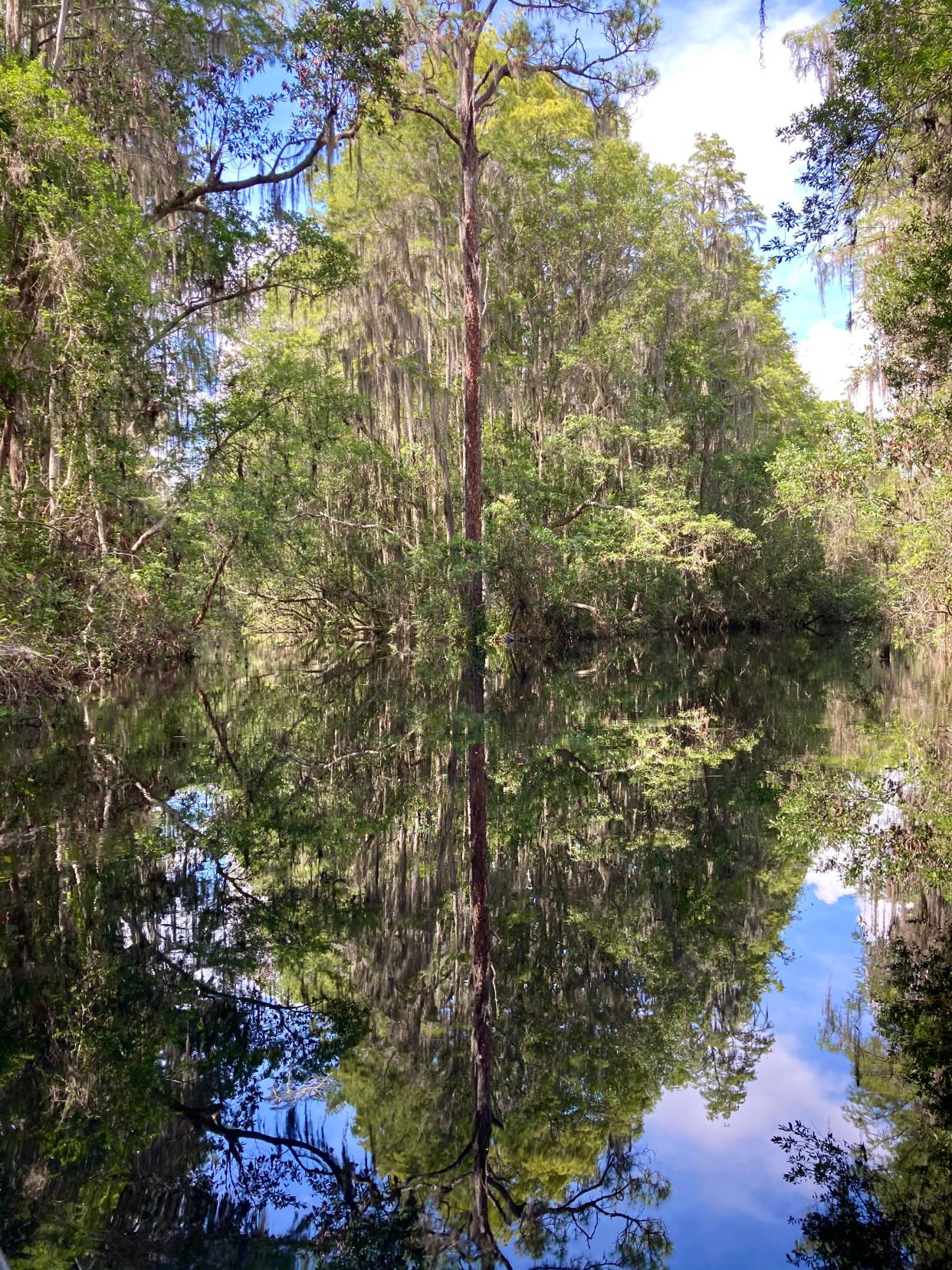Georgia representatives push to make Okefenokee Swamp a UNESCO World Heritage Site

- Oops!Something went wrong.Please try again later.
A bipartisan coalition of Georgia representatives is calling upon the U.S. Department of Interior to choose the Okefenokee National Wildlife Refuge as its nominee this year for the United Nations Educational, Scientific and Cultural Organization's World Heritage Site list.
U.S. Sen. Jon Ossoff (D-Georgia) was joined by U.S. Rep. Earl L. "Buddy" Carter (R-Savannah) and fellow members of Congress in a Wednesday letter voicing their support for the swamp. Like other member countries, the U.S. only gets to nominate one location per year for the special United Nations designation.
In a letter outlining its ecological, spiritual and economic importance in south Georgia, the group petitioned Shannon Estenoz, assistant secretary for Fish, Wildlife and Parks in the Department of Interior, the agency in charge of the country's nominations, to make the call.
What are the requirements?Okefenokee Swamp Park to seek UNESCO World Heritage Site Status for conservation, economy
Need a recap? Water wars on the Okefenokee heighten as EPD ends year with no permit decision
A long time coming
The Okefenokee National Wildlife Refuge has been on the U.S. World Heritage Tentative List since 2007, but it's languished there for almost 16 years. Now old enough to drive a car, the collective support for the swamp's recognition has ballooned in recent years in part due to the looming threat of a controversial titanium dioxide mining operation planned for the edge of the refuge, although UNESCO status wouldn't change U.S. legal protections for the swamp.
While other sites have been removed from the list, the Okefenokee has maintained its spot and consistently met UNESCO's qualifications for the designation.
"The Refuge contains critically important and significant habitats for wildlife and plants as well as numerousthreatened and endangered species," the group wrote. "It remains a relatively intact hydrological site, insulated from outside impacts, and is the source of two rivers, one that flows into the Atlantic and the other into the Gulf of Mexico."
Moreover, the letter argued the swamp's biodiversity and increasingly important role in the fight against the impact of climate change further its position as a natural resource of critical importance.
Politicians' protective efforts:Okefenokee Protection Bill seeks second try at preventing mine at swamp
Recently at the Refuge: Public comments for Okefenokee Swamp mining plans are open
The swamp already boasts plenty of accolades: the U.S. Environmental Protection Agency has identified it as an Aquatic Resource of National Importance, it is a National Natural Landmark and a National Wilderness Area and it has been designated a Wetland of International Importance by the Ramsar Convention, an international treaty for the conservation of wetlands. It is also in the process of being recognized as a Traditional Cultural Property for its cultural relevance to the Muscogee (Creek) Nation, the indigenous tribe native to the land. The Refuge contains at least 74 Native American mounds and archaeologists have revealed that thousands of Native Americans lived in the area over centuries.
Even with all these special titles, the letter stated that the UNESCO World Heritage Site status would further encourage environmental protection, economic prosperity, preserve the swamp's resources and further scientific exploration and analysis, in addition to the benefits for the local tourism industry from an international draw.

Bipartisan support from the Okefenokee's district
Ossoff and Carter are joined on the letter by Sen. Raphael Warnock (D), Rep. Sanford D. Bishop, Jr. (D-Albany), Rep. Henry C. "Hank" Johnson, Jr. (D-Lithonia), Rep. Nikema Williams (D-Atlanta), Rep. Lucy McBath (D-Marietta) and Rep. David Scott (D-Atlanta).
The Okefenokee National Wildlife Refuge is located in Carter's district of south Georgia — the lone Republican on the bipartisan letter. While the politician has been largely quiet on the issue of the controversial mining proposal, in December he spoke out in a Congressional Western Caucus press release against expanded federal water protections that could provide more federal protections to wetlands like those in the Okefenokee refuge. He argued that restoring the Obama-era Waters of the United States rule would create confusion and "disastrous regulations" for Georgia farmers, businesses, homeowners and more.
Carter did not immediately respond on Wednesday for comment.
Marisa Mecke is an environmental journalist. She can be reached at 912-328-4411 or at mmecke@gannett.com.
This article originally appeared on Savannah Morning News: Georgia lawmakers push to make Okefenokee a UNESCO World Heritage Site

